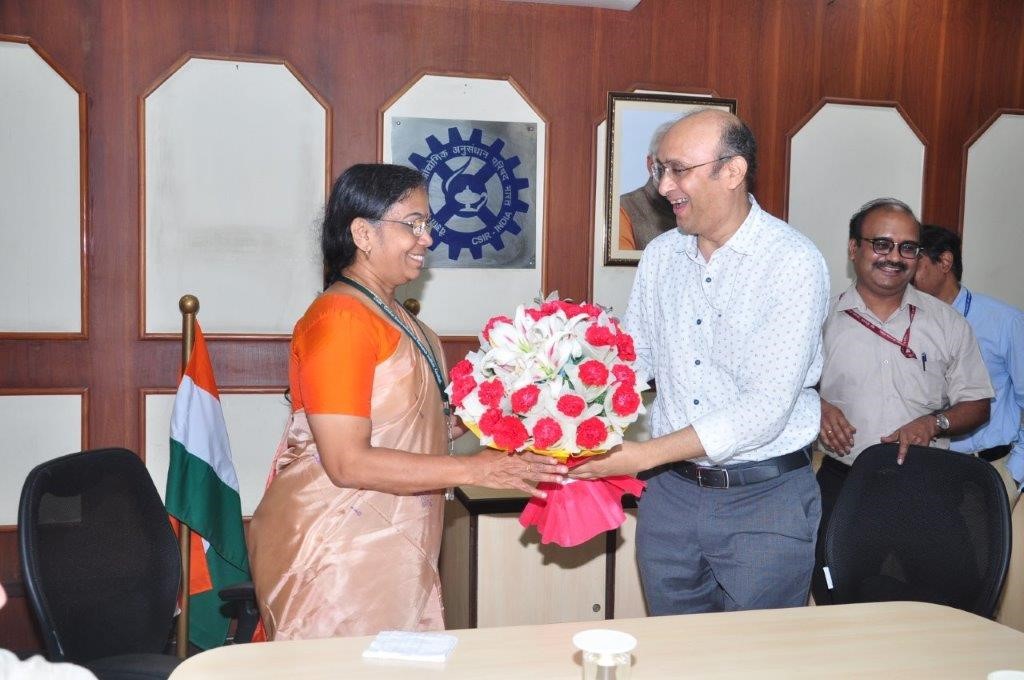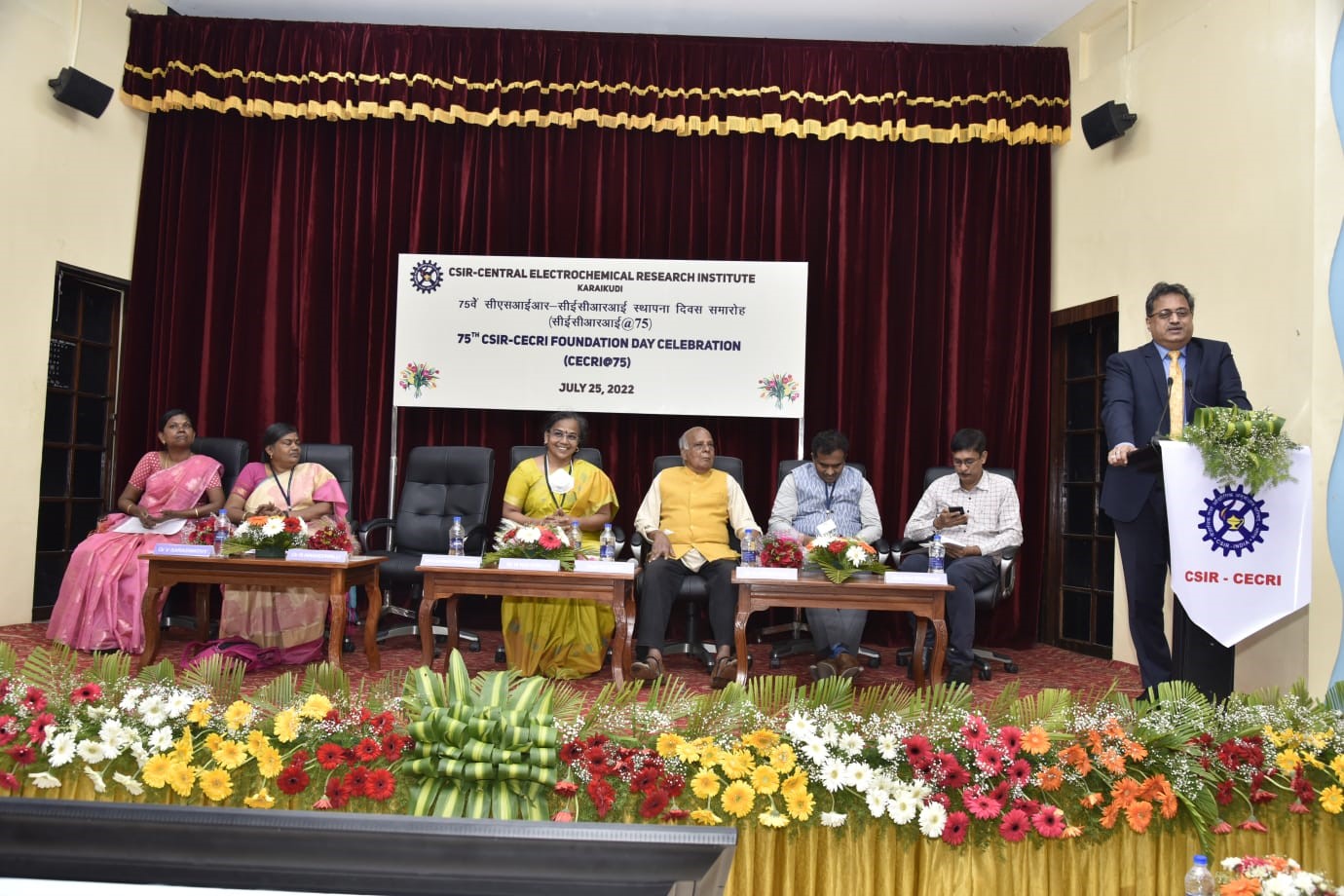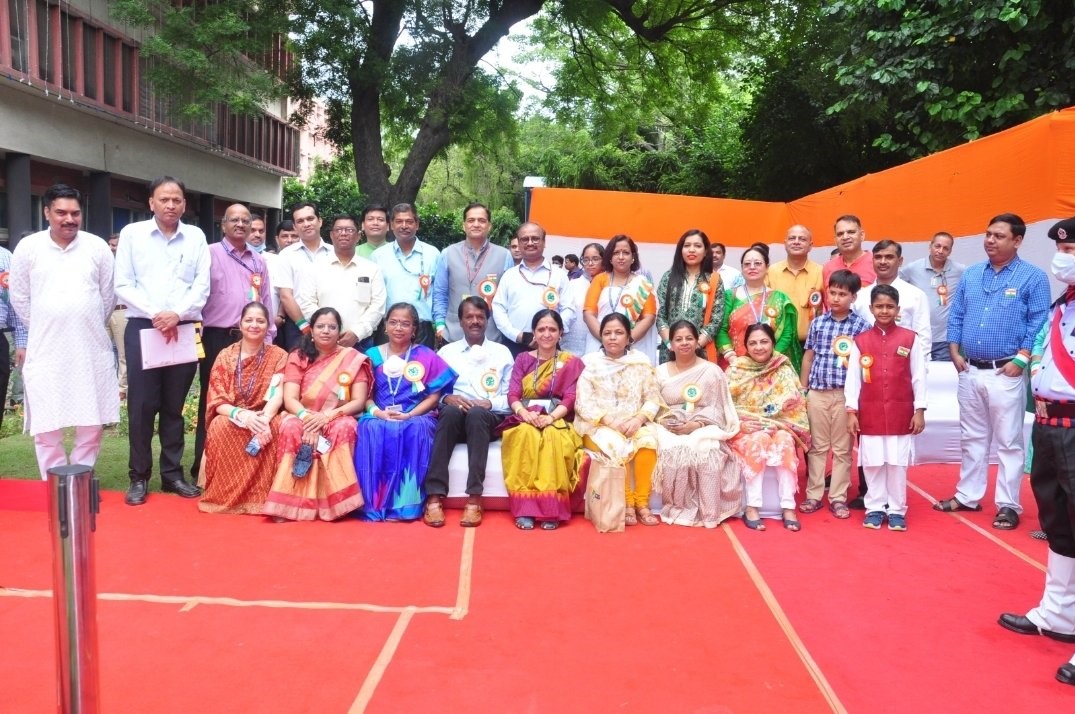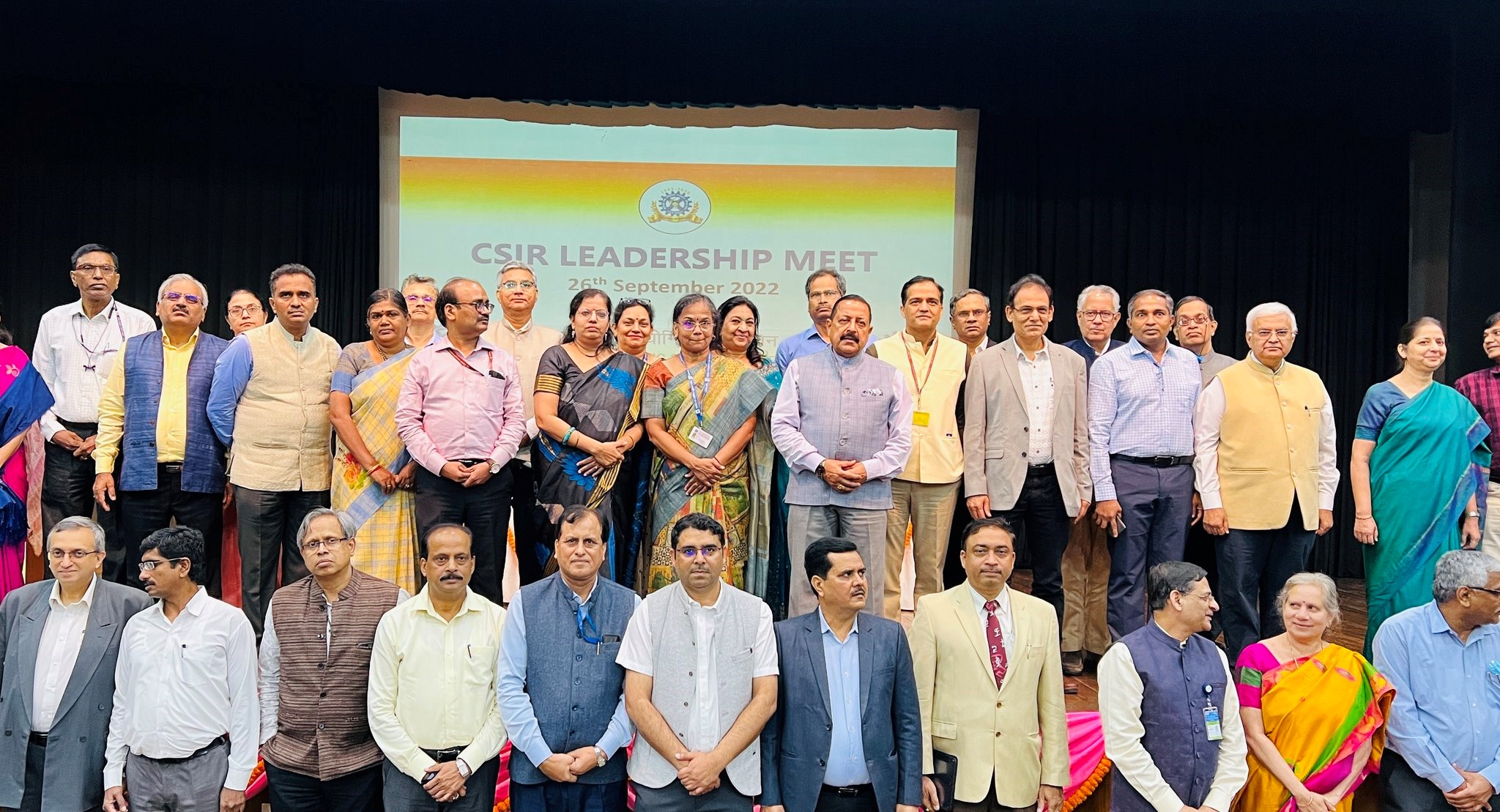
- A+
- A
- A-

Dr. Kalaiselvi taking over charge as the Director General of CSIR
Image credits: CSIR
The Council of Scientific & Industrial Research (CSIR) is a contemporary research and development (R&D) organisation that strives to achieve socioeconomic transformation by promoting industrial and technological advancements across diverse fields of science—from geophysics, pharmaceuticals, biology, and nanotechnology to aeronautics, environmental engineering, and information technology. As CSIR embarks on a journey to accomplish India’s vision for 2047, it will be led by Dr. N. Kalaiselvi, an electrochemical researcher by training and the first woman to serve as the Director General (DG) of the organisation.
As a young scientist, Dr. Kalaiselvi began her research career at Tamil Nadu’s Karaikudi-based CSIR-Central Electrochemical Research Institute (CSIR-CECRI)—a laboratory often referred to as the “difficult situation lab” because of its remote location and limited connectivity. She went on to head CSIR-CECRI before being appointed to her current role.
In this conversation with us, she discusses the contours of her journey to head CSIR, what keeps her motivated, what she learned, and her vision for the future of CSIR in terms of its role in meeting India’s growing technological needs and achieving the Sustainable Development Goals.
Road to CSIR
Dr. Kalaiselvi recalls starting her career as a teacher of science and engineering. In 1997, she joined CSIR-CECRI, where she evolved from an organic chemist to an expert in electrochemistry, and finally, to the Director of the institute in 2019.

Foundation Day at CECRI
Image credits: CSIR
As the Director, Dr. Kalaiselvi applied her insights to ramp up the technological outputs of CSIR-CECRI. While preparing for CSIR-CECRI’s 75th anniversary in 2022, she pioneered a program to help researchers bring stalled projects to closure. “Occasionally, projects reach 90% completion and then get delayed in the final lap due to last-minute hiccups. As we entered CECRI’s 75th year, we asked our researchers to identify the obstacles they faced while developing selected technologies and gave them the necessary funding and other infrastructural support to wrap up unfinished projects and produce mature technologies. Through this program, 4 out of 19 projects were completed within 12 months, and another 2–3 will also be completed soon,” she recalled. This incident (which required no additional infrastructure investment) was not only a source of immense satisfaction for Dr. Kalaiselvi but also served as a testament to her leadership and administrative acumen.
In August 2022, Dr. Kalaiselvi was appointed as the DG of CSIR that has 38 labs of CSIR. Having previously held leadership positions at different levels, Dr. Kalaiselvi says she has found herself in familiar waters with this new role, describing it as akin to learning new words in a known language. She opines, “the system I am working in is one I’m well-accustomed to. The only difference is that my role has been re-defined, and my responsibilities have expanded.”
Continuing the legacy of CSIR and DSIR
As the DG of CSIR, Dr. Kalaiselvi also holds the position of Secretary, Department of Scientific and Industrial Research (DSIR), which is a department under the Indian Government’s Ministry of Science and Technology. She clarifies, “CSIR is an arm of DSIR. The two bodies serve complementary functions with the same goal—industrial advancement. While DSIR handles project approval and recognition, CSIR drives science and technology. In this way, the two act in synergy.”
Looking toward the future of CSIR and DSIR, Dr. Kalaiselvi expresses her gratitude to Dr. Shekhar C. Mande, the former DG of CSIR, for his clearly defined vision for 2030. In line with the plans laid out for "Amrit Kaal” (India’s vision for 2047) by Prime Minister Narendra Modi, Dr. Mande prepared a ‘CSIR in 2030’ Performance Appraisal Board (PAB) Vision based on inputs from individual research groups. Now, for Dr. Kalaiselvi, the plan is to follow this thematic vision in cooperation with the entire CSIR family and then extend or leverage the progress achieved to meet India’s 2047 goals.
Fulfilling India’s vision for 2047
The first step towards fulfilling India’s promise for Amrit Kaal lies in realising the United Nation’s (UN’s) Sustainable Development Goals (SDGs) by 2030. As a central entity for different areas of science and technology, CSIR will play a critical role in this mission, aligned with the vision of PAB. CSIR’s mission roadmap towards this goal has multiple subdivisions.
Dr. Kalaiselvi highlights that one of CSIR’s highest priorities is helping India meet its goals as part of the COP26 agreement. “CSIR is spearheading multiple projects for technological advancements aimed at meeting SDGs. These include reducing greenhouse gas emissions and India’s carbon footprint, and improving access to clean water, sanitation, and healthcare and overall citizen well-being,” she notes.
Providing additional details about the clean energy goals, she delineates some key approaches being implemented by CSIR. These include:
• Successful development of indigenous carbon dioxide (CO2) adsorption technologies for reducing CO2 emissions from industries, which will soon be implemented at the national level;
• Additional technologies that allow the conversion of trapped CO2 into valuable end-products, like a basic raw material called adipic acid, reducing raw material input and further decreasing carbon footprints;
• Large-scale CSIR Hydrogen Mission for the generation of hydrogen-based clean energy using electrolysers, which could be used in fuel cells; and
• Energy storage devices, i.e., batteries, for hydrogen-based energy, which could be used to produce fuel-cell operated two-wheelers and three-wheelers.

Independence Day 2022
Image credits: CSIR
CSIR 800
Technologies are ineffective if they lack accessibility. This is where the CSIR 800 initiative comes in. “Through CSIR 800, we are aiming to reach the “unreached” parts of the country, where almost 800 million people live. The goal is to understand the problems faced by individuals in remote areas and address them by employing technologies,” Dr. Kalaiselvi explains.
Before COVID-19, Ph.D. scholars from the Academy of Scientific & Innovative Research (AcSIR) and other institutes would visit rural areas to understand the problems faced by villagers, before developing science and technology interventions to solve them. While this became challenging due to COVID-19, another program called CSIR-HARIT (Harnessing Appropriate Rural Interventions and Technologies) started as part of which technologies with direct social relevance were disseminated to rural areas. One of the biggest triumphs of CSIR-HARIT, explains Dr. Kalaiselvi, is the development of blight-resistant Samba Masuri (an important rice variety), which has almost doubled the farmers’ income and helped produce high-quality crops. Together, these approaches for improving technology access will be key in strengthening India’s work to attain SDGs.
Partnering with industries
CSIR’s activities are inherently collaborative and conducted in partnership with interdisciplinary teams across various academic and research institutes. However, industries are the most important partners within the CSIR ecosystem. They serve as the link between CSIR and the public, making new technologies available through a series of processes including strategic application, mass production, product packaging, and marketing. “Industries ensure the wide-spread adoption of technologies. They partner with CSIR and take the technology we develop to the next stage—the market—promoting technology-mediated progress and improvements in the standard of living,” remarks Dr. Kalaiselvi.

CSIR Leadership Meet 2022
Image credits: CSIR
Personal motivations
Dr. Kalaiselvi has achieved many milestones, and the road she is taking with CSIR promises to be an exciting one. When asked about her sources of inspiration, Dr. Kalaiselvi says that she is a great believer in learning from every interaction and every environment one finds oneself in. “As someone with a keen sense of observation, I try to imbibe a learning point, no matter how small, from every conversation. Many people have inspired me,” she states. She greatly admires Dr. A.P.J. Abdul Kalam, not only for his work as a scientist but also for the dignity with which he conducted himself while serving in different positions. “Dr. Kalam’s book, ‘Wings of Fire,’ can ignite the mind,” comments the literature lover. “Another book that inspires me is ‘Don't Say Yes When You Want to Say No’ by Herbert Fensterheim,” she adds, while also commenting on her affinity for regional, especially Tamil, literature.
Dr. Kalaiselvi holds close to her heart the value of transparency and emphasizes the need to have faith in oneself and others. Indeed, her penchant for open communication has helped her solve a plethora of problems in regular conversations as well as science and technology and reach new frontiers of research and administration. As the first woman DG of CSIR, she is a beacon of hope and inspiration for women across the country. Harnessing the power of the unassuming tolerance that she finds in womanhood, she seeks to propel CSIR into a new era of world-class interdisciplinary research, guiding innovation and growth across industrial sectors and bolstering socioeconomic development and equity as India grows into a 100-year-old republic.
About the author
Zeba Khatri is a freelance science writer and communication consultant, and a self-confessed philomath.




